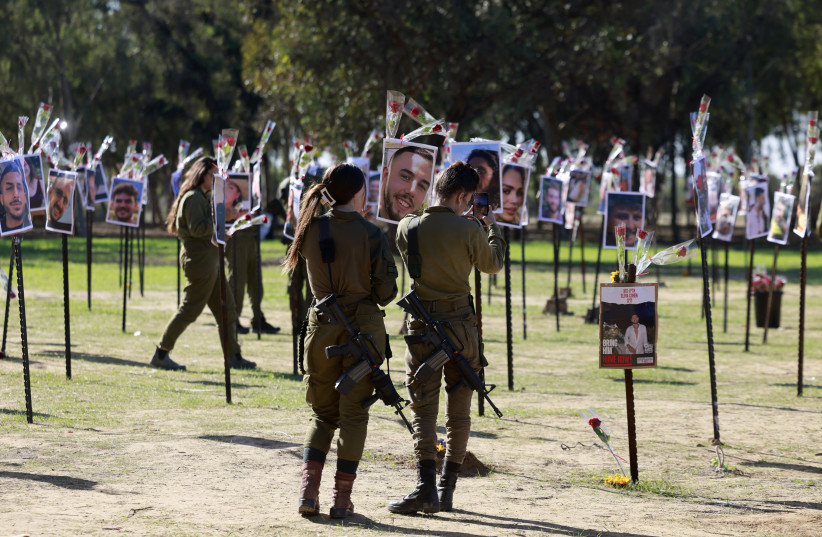A freelance photojournalist, Ali Mahmud, contributed to the Associated Press (AP) winning first place for the Team Picture Story of the Year last week for taking a photo of Shani Louk's half-naked corpse as Hamas terrorists were driving it away on October 7, alluding to the photographer's knowledge of the attack beforehand.
According to the Pictures of the Year program's website, the category "recognizes the collaborative effort of a photography staff covering a single topic or news story. It is a narrative picture story that consists of images taken as part of a team effort to cover a single issue or news story."
Other photos, mostly attributed to other photographers on behalf of the Associated Press, were snapped of destroyed or damaged buildings in Gaza, injured or dead Palestinians, Israelis mourning at funerals or fleeing from rocket attacks. However, many of these photos allude to photographer's previous knowledge and possible involvement of the massive attack launched on Israeli soil - in order to get the "shot of a lifetime."
The program posted news about the AP's victory, alongside Mahmoud's photo of Louk on Instagram, where they came under immense criticism from users. Louk's name is not mentioned anywhere in the program's Instagram post.
Social media reaction
"There is a dead body of a partially unclothed human being, a young woman who was brutally murdered and probably raped. This cannot be real. Please remove this photo," one user wrote, while another said "She has a name. Shani Louk. Her family specifically requested that we remember her laughing and living. Take this down and show some respect. If you want to post our Shani, find a photo she consented to."

Mahmud, who took the photo of Louk, had his name mentioned in an earlier report when parents of Louk and other Nova massacre victims sued AP and Reuters last month for their employment of photojournalists who accompanied the terrorists on their pogrom and contended that AP ignored close connections the photographers had to terrorist organizations, to which they said: "we have not seen any evidence – including in the lawsuit – that the freelance journalists who contributed to our coverage did."
On its website, Picture of the Year international did include Shani Louk's name in the caption. However, on its Instagram account, it did not mention her name in the caption accompanying her picture.
This is in direct contradiction to accepted journalistic practice, specifically, the AP's style guidelines for caption writing, which state: "The Caption field is the text that accompanies the photo, containing the who, what, when, where and why information." Whoever wrote the caption for the Instagram post omitted the "who" information on the name of the murder victim, which was widely reported around the world.
In both the Instagram post and the Picture of the Year website, the photographer and editor also neglected to include the names of those transporting her body, presumably her murderers and rapists, whose faces are clearly visible in the picture. The photographer was clearly close enough to speak to them and ask their names, and if they refused to identify themselves, that would have been worth noting in the caption.
Hannah Sarisohn, Hannah Brown and Michael Starr contributed to this report.
